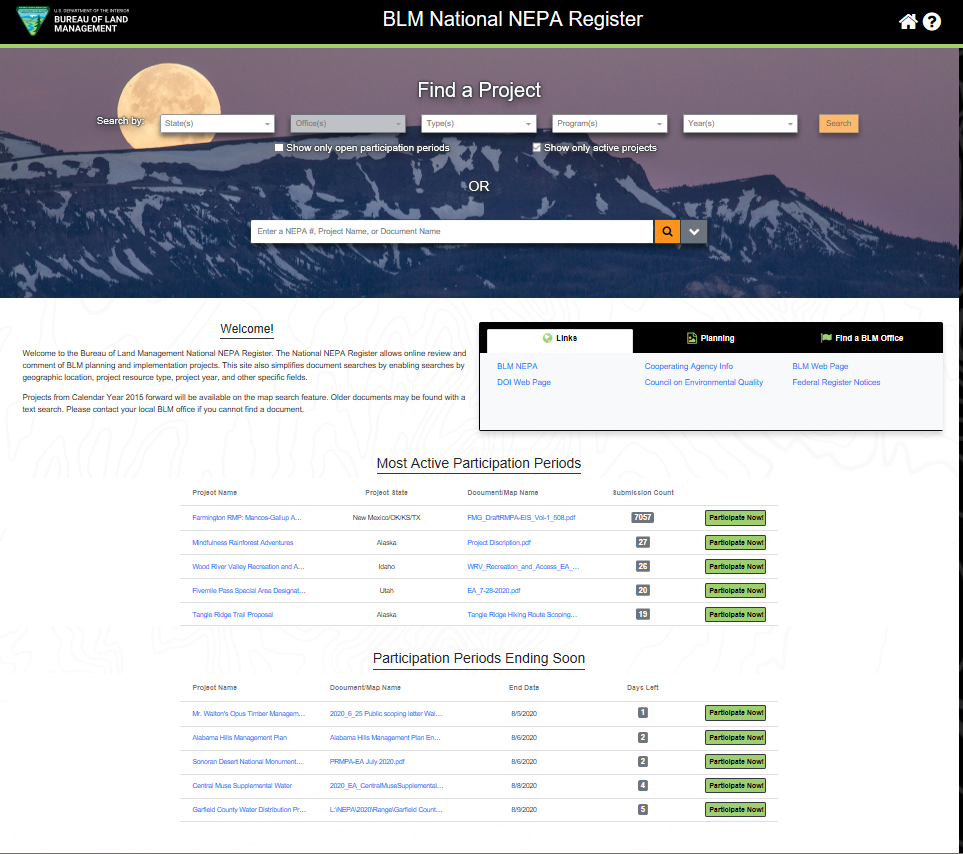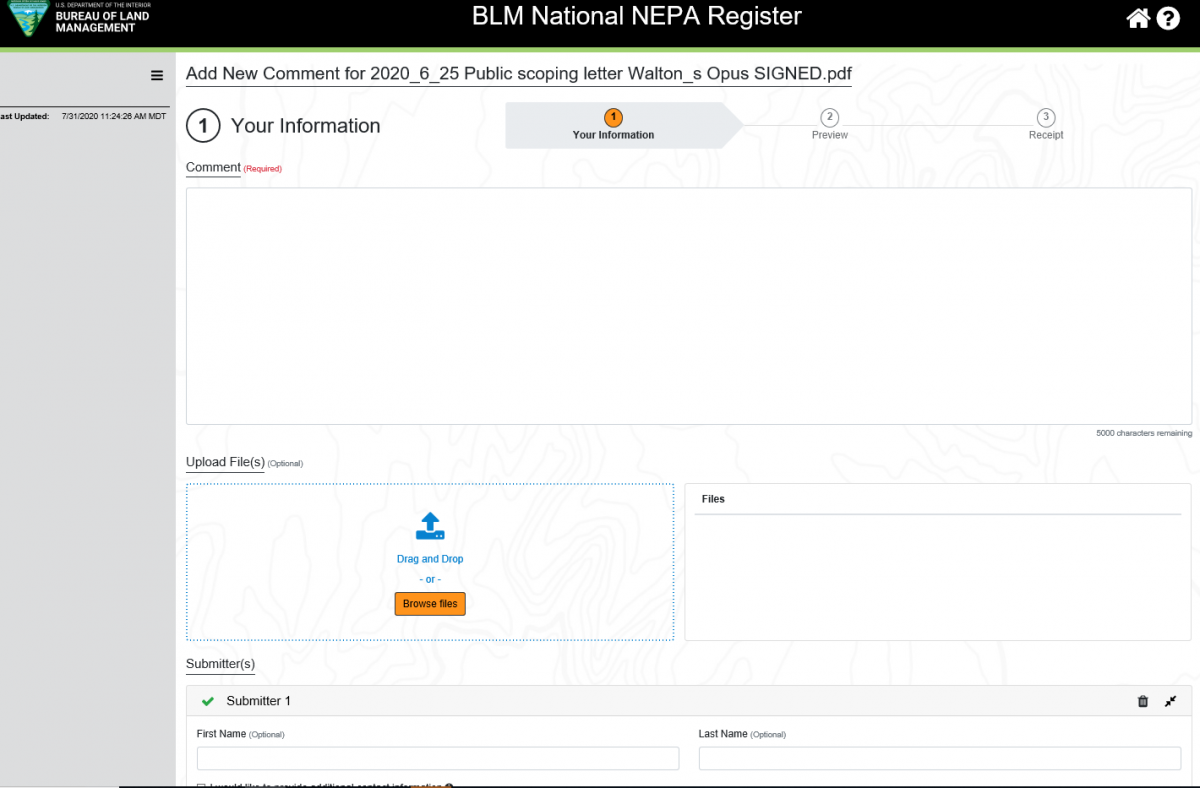You are viewing ARCHIVED content published online before January 20, 2025. Please note that this content is NOT UPDATED, and links may not work. Additionally, any previously issued diversity, equity, inclusion or gender-related guidance on this webpage should be considered rescinded. For current information, visit https://www.blm.gov/blog.
Bureau’s ‘NEPA Register’ makeover is more than skin deep
New tools make land-use plans and proposals easier for public to search and participation in
It’s now faster and easier than ever for members of the public to find and take part in the Bureau of Land Management’s environmental analyses and land use plans, thanks to its new NEPA Register website (NEPA is short for the National Environmental Policy Act).
The bureau uses the website to put land-use plans and proposals at the public’s fingertips. It also helps the bureau track how many people take part. It can be found online at https://eplanning.blm.gov/eplanning-ui/home using the latest web browsers.
Improvements for the public
- Modern, mobile-responsive user interface
- Combined text and map search w/project summary popups
- Simplified and map-combined “participation” process for comments and protests
- Consistent look across all project types
- Project location picture on each project page
- New public Help Desk feature and education tools

by geographic location, project resource type, project year, many other
search fields. The BLM uses the website to make land-use plans and
proposals accessible to the public and track public participation. The first
major software upgrade since 2014 is dramatically faster than the old version.
The new NEPA Register combines the old NEPA Register and Land Use Plans Register using the same look and feel as BLM’s other public web pages, according to Erik Ringenberg from the BLM’s national team implementing the upgrade.
Customers are now greeted with simpler controls that highlight the most recent and active participation periods. But more importantly, Ringenberg noted, is that the power behind the new NEPA Register makes it more than just a pretty face. The first major software upgrade since 2014 is dramatically faster than the old version.
“The new application was also built so those using tablets or phones can easily find projects and documents, as well as submit comments.“ said Ringenberg. “Increasing user satisfaction was the end goal of upgrading and moving to new servers.”
Using text or points on a map, the new platform simplifies searches by geographic location, project resource type, project year, and many other search fields. Search results also include pop-up project summaries.
Customers can find projects and even comment on maps by simply clicking a point, drawing a line, or outlining an area on the map. The updates removed several steps and combine public comment and protest submissions. You can even comment anonymously outside of protest periods.
Project Manager Doug Albright said the redesign follows secretarial orders to streamline the NEPA process and includes input from many state planners to better meet customer needs. The team carefully choreographed and retrofitted a lot of input to simplify things “…so end users can focus on the big picture,” said Albright.
Help for all users
The development team is also using this rollout to call attention to new public education and help tools. Videos now show customers how to navigate the site, as well as participate in NEPA projects. Members of the public also get their own Help Desk for the first time, which allows them to submit and track questions and trouble tickets. All these features are available using the “?” help icon at the top right of the screen.
“The future for BLM's NEPA Register application looks bright as a critical tool for the bureau,” said Ringenberg. “There are always more steps we can take, and we will continue striding toward an even more streamlined platform.

Eric Tausch, Public Affairs Specialist
